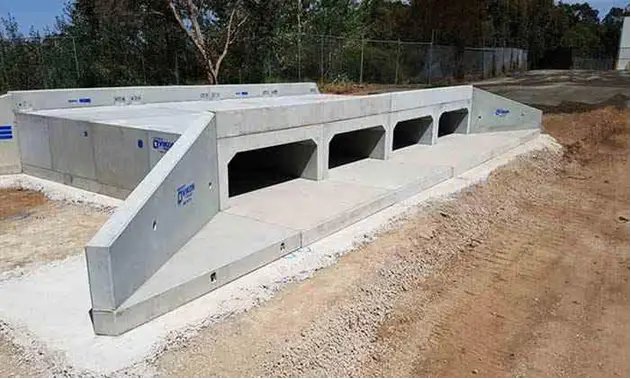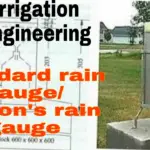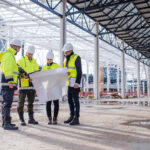A very common confusion between two vital structures is present among students and engineers as well that is “What is the difference between culvert and a bridge”.
Culvert and a bridge both span a clear space and looks similar to each other, but there is a clear difference between their purpose as well as their design.
In this post we will be trying to understand that difference and after reading this post you will be able to easily distinguish between them just by looking;

What is a bridge in civil engineering?
First of all don’t confuse the word “Bridge” with that of the card game played mostly and is very popular among teens.
“Bridge is a structure that spans a physical natural hurdle or obstruction like river or a valley. A bridge carries a passage that can be a roadway or railway across an obstruction that can be a river or a railroad or even another road as well”
A bridge is a structural element that transfers the load from one span to another. It is usually constructed over a large water body or any physical obstruction. The structural elements of a typical bridge include an arch, piers, abutments, stringers, and decking.
In the civil engineering discipline, bridges are considered as one complex structure. Piers and abutments are the supporting elements of a bridge. The span usually extends from 6 meters to more than 120 meters and has extremely deep foundations.
Thus bridge allows easy movement of vehicles or people across a river or a valley without difficulty, and in this way it reduces the distance and time required to cross such a distance.
Now when you’re in a project and you’re not able to understand if that’s a bridge or a culvert you need, you can use the RFI in construction to manage such doubts at site.
Like Us on Facebook!

What is culvert in civil engineering?
”culvert is a structure that allows the easy passage of water through a physical obstruction that can be a hill or a roadway or a passage or a walkway”.
Subscribe Us on YouTube!
Culvert is typically embedded by a soil or surface. Culvert can be made up of a reinforced concrete or even steel as well.
Whereas, a culvert is a man-made tunnel-like structure that carries a stream or water channel under a railway or road. When compared to bridges, culvert structure is quite simple and its structural elements include concrete boxes, a deck or a slab, pipes, and other supporting parts.
Normally, a culvert is heavily embedded in the soil and supports a huge portion of the culvert load. It is often constructed as an enclosed structure. The shapes of the culvert may vary, some may come in rectangular, semi-circular, pear, or elliptical shapes.
A culvert span is usually around 6 meters and unlike bridges, it does not require a deep foundation. The preponderance of culverts are made off-site and supplied to the installation location.
Also Read: What are Culverts? Definition and Types
Difference between bridge and culvert
To guarantee that the finished product will transport traffic safely for years to come, manufacturers must come with the designers’ requirements and industry standards. On-site construction of reinforced concrete box culverts is occasionally used.
Bridges are long, linear constructions that span wide bodies of water or other physical barriers, allowing heavy, swiftly moving vehicles to pass. Compared to a culvert, a bridge structure require es more accurate and complex design, as well as a significantly greater budget, more time, and more labor during construction.
Now if you go through their introduction you will be at ease in differentiating the two structure, firstly and importantly culvert is made for passage of water where as bridge is designed to allow the easy passage of traffic or community.
Also Read: Types of bridges 5 Various Bridges commonly constructed
From the image we can make in our mind of culvert and bridge is; bridge is a bigger structure as compared with a culvert,
Bridges mostly don’t have a floor; by floor we mean in bridges the two piers or abutments are not joined at bottom by a surface where as in culverts they have a proper floor and are circular, rectangular or elliptical.
Now if from just a look you are not able to decide whether it is a culvert or a bridge the deciding factor is its size,
If the size of the structure is more than 20 feet it is a bridge and if less than it would be a culvert.
| Bridges | Culverts |
| A bridge is a big structure built across a significant body of water or physical impediment that allows cars and people to pass. | A box culvert is a tunnel-like structure constructed beneath roads or railroads to facilitate cross drainage from one side to the other. |
| Bridges’ major components are the superstructure, decks, and substructures. | A box culvert is made up of single or several concrete boxes, pipes, a top deck slab, and supporting pieces. |
| While constructing a bridge, strong and deep foundation is very important | No deep foundation is needed for a culvert |
| Abutments and piers are the supporting structural elements of a bridge. | Culverts are embedded in the soil, which bears the major portion of the culvert load |
| Bridges can take heavy amount of load and withstand heavy and speeding vehicles | Culverts are not that much load bearing structures as compare to the bridge |
| Bridges saves time and reduce distance | Culvert prevent water logging, flood and erosion |
| A bridge span range from 6 meters to more than 120 meters | The length of culvert is typically not more than 6 meters. |
| Bridges frequently have straight, linear lines. | Culverts are enclosed objects that might be square, elliptical, pear-shaped, rectangular, or semicircular. |
| Over a big body of fluctuating flow, a bridge structure is built. | To move water via tunnels or channels under roads, culvert structures are constructed. |
| Bridges only let traffic to cross their decks. | Roadways both below and above the culvert’s deck can be accommodated. |
| Bridges provide a quicker, shorter mode of transit that also reduces travel time. | Flooding, erosion, and waterlogging are all prevented by culverts, which allow for natural water flow beneath a road. |
| There are no floors in the bridge’s construction. | It has sides, roofs, and a roof. |
| Over 6 metres over a barrier or water body, bridges are constructed. Bridges can handle the weight and speed of moving traffic. | Culverts are built no higher than 6 metres above the physical obstruction. |
| For a specific bridge component, the Cast-in-situ method and occasionally the precast technique might be taken into consideration. But it needs a significant budget and a large labour force. | Culverts may easily be built using cast-in-situ concrete or precast concrete. The latter building technique is more costly but takes less time. It doesn’t call for a large budget or extra staff, though. |
| The bridge demands careful and accurate study and design; as a result, it takes a long time to design and build and requires a large budget. | Compared to bridges, culverts don’t require as large of a budget. |
| For the load to be securely transferred to the earth beneath the bridge, it needs a strong, deep foundation. | Culverts can support their load without a solid foundation. The footing can be spread out. |
| The weight of the bridge is supported and transferred to the foundation by abutments and piers. | A large portion of the culvert loads are supported by the soil in which culverts are buried. |
| Reinforced concrete and steel that has been reinforced. | High-density polyethylene, aluminum, plastic, steel, concrete, and steel. |
Also Read: Parts of Bridge






















